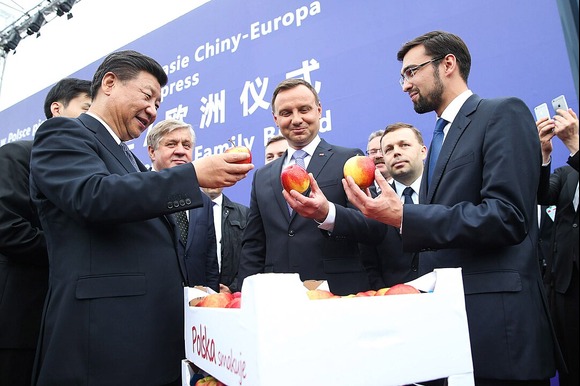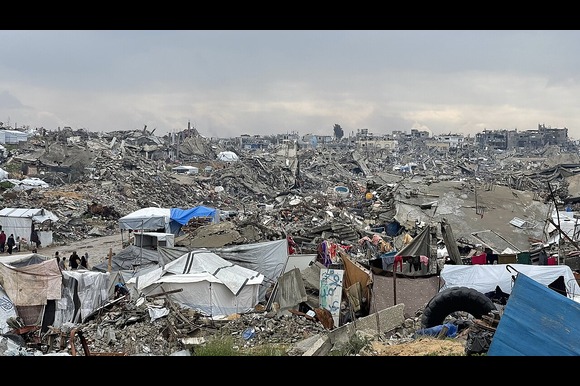
By Andrzej Hrechorowicz
China’s economy grew at its slowest pace in a year during the three months to the end of September, weighed down by a deepening property market crisis and rising trade tensions with the United States.
Official figures released on Monday showed the world’s second-largest economy expanded by 4.8% year-on-year, compared with 5.2% in the previous quarter. The latest slowdown highlights persistent structural challenges as Beijing seeks to stabilise growth ahead of a crucial leadership meeting this week.
Trade Strains and Rare Earth Restrictions
The data follows Beijing’s recent decision to impose sweeping controls on exports of rare earth minerals — materials vital to the global electronics industry. The move has unsettled its fragile trade truce with Washington and sparked concerns of a renewed trade conflict.
According to Sheana Yue, senior economist at Oxford Economics, China’s exports have so far helped offset weak domestic demand, which she described as “sluggish.” Yue warned that overall growth this year is unlikely to surpass 4.8% unless the government introduces additional fiscal support.
Beijing has already spent billions on incentives such as subsidies, wage increases, and consumer discounts to boost spending and reinvigorate growth. Economists expect further measures to be unveiled in the upcoming Five-Year Plan, which will outline China’s medium-term economic strategy.
Property Sector Continues to Struggle
China’s real estate sector, a pillar of the national economy, remains mired in crisis. Real estate investment dropped 13.9% in the year to September, marking one of the steepest declines in recent years.
The downturn has been characterised by falling home prices, reduced sales, and several high-profile developers abandoning projects. The sector, which accounts for roughly one-third of China’s GDP and a major portion of local government revenue, has become a key obstacle to sustained growth.
“Despite policy support, housing is still the major drag on China’s economic growth,” said Prof. Laura Wu, an economics lecturer at Nanyang Technological University. She noted that ongoing uncertainty surrounding Washington’s tariffs and trade restrictions has further compounded the sector’s woes.
Leaders to Set Economic Direction
The third-quarter figures will guide discussions at a high-level meeting of China’s top leaders this week, where officials are expected to finalise the nation’s next Five-Year Plan. The discussions will focus on strategies to sustain growth while tackling long-term weaknesses in consumption and property investment.
China’s National Bureau of Statistics (NBS) maintained that the economy continues to demonstrate “strong resilience and vitality” despite mounting pressure. The NBS cited gains in the technology and business services sectors as bright spots contributing to economic momentum.
Beijing has targeted “around 5%” growth for 2025 and has so far avoided a sharp downturn, aided by government stimulus and what had, until recently, been a period of relative calm in trade relations with Washington.
Tensions with the United States Escalate
Earlier this month, the rare earth export controls triggered a swift response from US President Donald Trump, who threatened to impose an additional 100% tariff on imports from China.
US Treasury Secretary Scott Bessent said he plans to meet Chinese officials in Malaysia this week to help defuse tensions and arrange a meeting between Trump and Chinese President Xi Jinping.
Before the latest flare-up, Chinese firms had taken advantage of the trade truce to ramp up exports to the US. In September, China’s exports rose by 8.4%, while imports also increased, suggesting some recovery in overall trade activity.
Industrial and Service Sectors Offer Support
Despite headwinds, China’s industrial output grew by 6.5% in September compared with the same period last year. Growth was driven by industries such as 3D printing, robotics, and electric vehicles, which have emerged as major contributors to the country’s technological transformation.
The service sector — including IT support, consultancy, transport, and logistics — also recorded expansion, reflecting resilience in high-value industries even as consumer spending lags behind.
Outlook
While government officials emphasise the economy’s adaptability, analysts warn that the combination of property sector weakness and escalating trade tensions could constrain China’s ability to meet its full-year growth target.
Beijing’s upcoming policy roadmap will therefore be closely watched for signs of further stimulus and reform, as China balances the competing demands of economic stability, technological self-reliance, and external geopolitical pressures.




